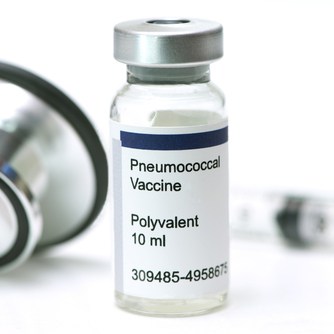Healthcare professionals are often uniquely positioned to spot the signs of human trafficking. In crisis situations, they can provide trauma-informed care and, when able, equip the trafficked individual with resources to leave their abusive situation.
A worldwide industry
According to the United Nations, human trafficking isn’t merely a crime. It’s a global health and human rights issue. In 2017, the International Labour Office reported that traffickers exploited over 50 million people globally, including 22 million people trapped in forced marriages. Experts estimate that trafficking yields profits of around $150 billion (USD) per year.
Though human trafficking affects all sexes, ages, sexual orientations, ethnicities, and races, it wasn’t until the 21st century that a full legal definition existed. In the U.S., the Victims of Trafficking and Violence Protection Act of 2000 became the first law to directly address human trafficking. Also in 2000, the United Nations General Assembly implemented official protocols for the prevention, suppression, and punishment of human trafficking, shedding light globally on the issue.
Related course: Human Trafficking: What every NP needs to know
What is human trafficking?
Trafficking occurs when an individual is recruited, transported, transferred, harbored, and/or received by force, fraud, or coercion for the purpose of exploitation by a trafficker. Exploitation may take various forms, including sex trafficking, forced marriages, or labor trafficking. Any commercial sex act involving an individual younger than 18 years of age is considered sex trafficking. For adults, sex trafficking occurs when there is an element of force, fraud, or coercion, along with a commercial sex act.
Labor trafficking describes exploitation through involuntary servitude or slavery for manual labor. Debt bondage is a common subset of labor trafficking. In such cases, the trafficker leverages indebtedness to restrict a trafficked person’s freedom.
Sex and labor trafficking are often found in the following industries.
- Agriculture, including seasonal harvesting work or caring for animals
- Domestic work, including cooking, cleaning, other household work, and caregiving
- Restaurants and small businesses, including waitstaff, kitchen staff, bussers, or dishwashers
- Traveling sales crews and peddling/begging rings, including selling candy, magazine subscriptions, and other goods or soliciting money
- Health and beauty services, including nail salons, hair salons, spas, or massage parlors
- Escort services through agencies and online sex sites
- Brothels, which can be home-based, lodge-based, or truck stop-based
Who is trafficked?
Though trafficked people are often members of vulnerable populations, anyone can be trafficked. Healthcare providers should not assume that, because they do not work with minors or women, their patients are not at risk for trafficking.
The 2023 Trafficking in Persons Report, an annual publication from the U.S. Department of State, identifies a list of populations that are more vulnerable to trafficking in the U.S. Some of these include.
- Children in the child welfare and juvenile justice systems
- Runaway and homeless youth
- Unaccompanied children
- Individuals seeking asylum
- American Indians and Alaska Natives, particularly women and children
- Migrant laborers
- Foreign national domestic workers in diplomatic households
- Employees of businesses in ethnic communities
- Populations with limited English proficiency
- Individuals with disabilities
- Rural populations
- LGBTQI+ individuals
- Incarcerated individuals
- Victims of domestic violence or intimate partner violence
Factors like previous abuse or homelessness make individuals more vulnerable to trafficking. Traffickers target marginalized people (often those with a weaker social support system), as well as those who have limited financial support.
The signs of human trafficking
Survivors of trafficking are at risk for myriad physical and mental health disorders. Some of these include depression, post-traumatic stress disorder, suicidal ideation, substance abuse disorders, and sexually transmitted infections (STIs).
Shame, guilt, poor self-esteem, and fear for their family members (based on traffickers’ threats) also create complex psychological stress for trafficked individuals. It can feed into a cycle of victimization and traumatization.
A seemingly benign healthcare visit can become traumatic and leave patients shattered and more vulnerable if the healthcare professional comes across as judgmental. The same is true if part of the examination (like being asked to disrobe) triggers past traumas. These pervasive psychological effects are what drive the need for trauma-informed care.
Recommended course: Domestic Violence: A comprehensive approach
Physical signs
Signs of physical violence are common among trafficking survivors. These can range from broken bones to bruising to missing hair. Because social isolation is a tactic many traffickers use to control trafficked individuals, patients may have limited access to healthcare and may present with injuries in various stages of healing.
Pelvic inflammatory disease, STIs, ectopic pregnancies, and HIV/AIDS are common medical conditions seen in sex-trafficked individuals. Those trafficked primarily for labor exploitation often present with injuries related to occupational exposures, poor ventilation, sanitation, and malnutrition. Women trafficked for labor are also at a high risk for sexual violence.
Branding, or intentionally inflicting burns or cuts to create symbols, is another way traffickers may demonstrate ownership. Those who are being trafficked may have their trafficker’s name, a pseudonym, or a barcode tattooed or etched into their skin to signify the trafficker’s permanent ownership. Asking about a tattoo’s significance during a healthcare visit may elicit details about the patient’s social history.
Social signs of trafficking
Some key contextual indicators may seem unrelated to health, but they could help a healthcare professional identify trafficking as a possibility. Clinicians should pay attention to who attends the patient’s appointments and how the patient behaves in the office or examination room. The person who is taking care of the patient or assuming an ownership role — known as a “minder” — posing as an aunt, boyfriend, or other family member will often speak for the patient when questions are asked.
What to do if you suspect trafficking
It can be challenging to find balance between asking important questions of the patient and limiting the risk of re-traumatization. The goal for every clinical encounter is to provide quality care that minimizes harm to the patient and addresses their health needs.
While patients may disclose trafficking while meeting with a clinician, it is never the primary goal of an appointment. Pressuring patients for disclosure reduces their agency and could contribute to mistrust in the medical system. Involving survivors of the trauma in meaningful and real decisions, and empowering them to tell their stories, creates survivor-based practices that improve care quality.
Other critical concepts of trauma-informed care include:
- Safety: This includes the physical and psychological safety of the patient who may have been trafficked, and the healthcare staff. Patients must be certain they’re not in danger, either from their trafficker or from the authorities.
- Trust and transparency: Those who have been trafficked may fear that they’re in danger, from both their traffickers and the authorities. This fear and history of exploitation may translate to distrust of health professionals. Key principles of building and maintaining trust involve discussing these issues in a forthright manner and avoiding making promises that can’t be kept.
- Empowerment, voice, and choice: Empowerment gives an individual or group the ability to make choices and turn these decisions into actions and outcomes.
- Peer support: Sharing experiences with fellow trafficking survivors is a powerful tool toward recovery and healing. Helping a patient find these connections builds trust and hope. Peer support can take the form of peer counseling, either in groups or in mentoring roles from individuals who may have graduated from a support program.
Vital resources for patients
One of the most valuable resources for patients and the healthcare professionals is the National Human Trafficking Hotline (1-888-373-7888). For patients who are unable to freely talk on the phone, the hotline also operates a texting line and website.
- Webpage: www.humantraffickinghotline.org
- Text line: 233733
The hotline is available for patients, providers, or anyone concerned about trafficking. It provides connections to geographically specific resources, as well as tracking geographic patterns of trafficking in the United States.
While clinicians should encourage patients to use this resource, make sure it’s done in a safe, patient-centered way. Never force patients to accept papers or written phone numbers that may be found by their trafficker, leading to potential retribution.
Patients might want to memorize the number or store it as a different contact in their phone. Likewise, healthcare professionals might offer a secure space and time away from their trafficker in the clinical setting. The patient can then call the hotline via a clinic or hospital phone system, preventing their trafficker from tracing it back to them.
Resources for healthcare professionals
Dozens of organizations across the country are working on the front lines in the fight to end human trafficking. Some excellent resources can be found at The Polaris Project and the National Survivor Network.
Access additional statistics, reports, tips, and resources through the Department of Justice, the Department of Homeland Security’s Blue Campaign, and the Department of Health and Human Services’ Office on Trafficking in Persons.






